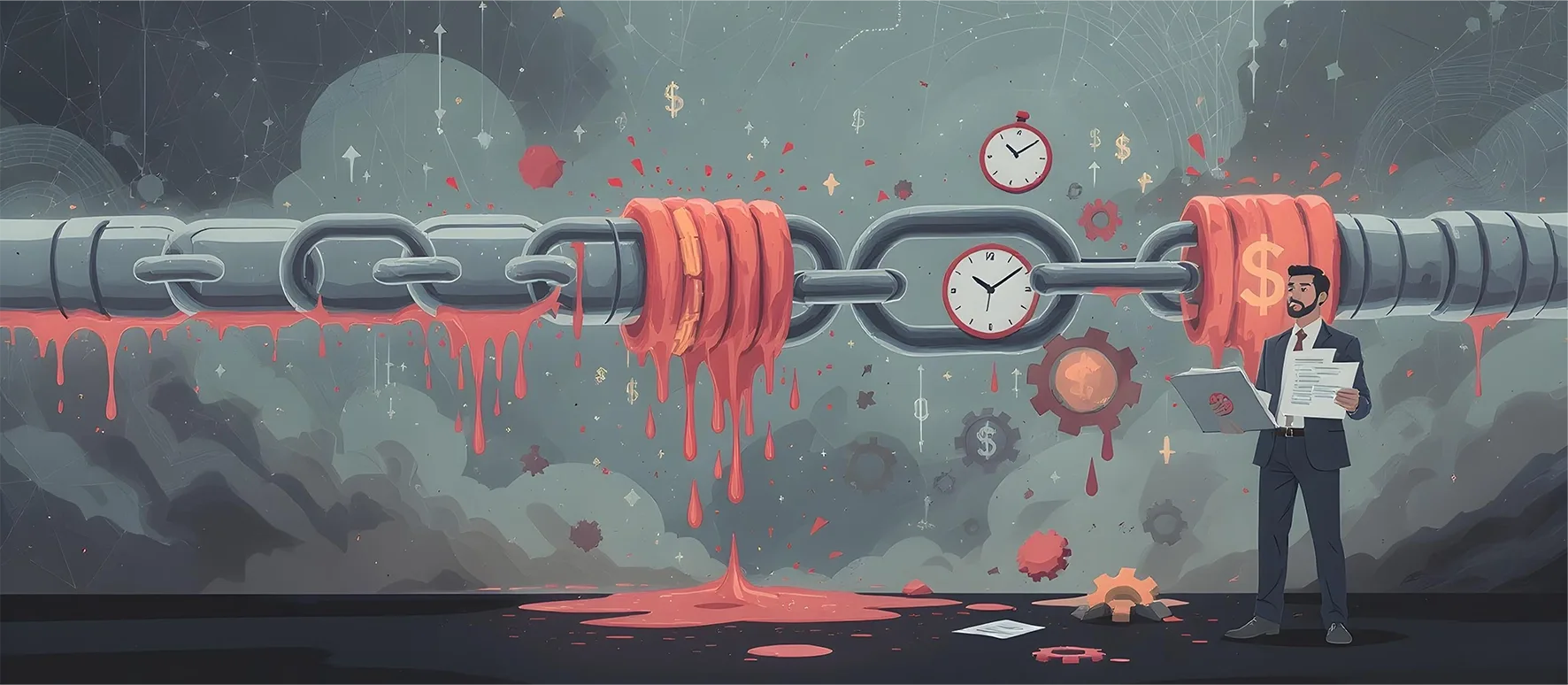Today, where speed, efficiency, and profit margins are everything, supply chain performance is not just an operational issue; it is a major competitive edge. But too many companies lose out on profit without even realizing it, all because of hidden inefficiencies in their supply chain.
While many focus on obvious costs like shipping fees or warehouse space, the real problems are often hiding in plain sight: disconnected systems, too much inventory, slow returns, and missed chances for sustainability. These hidden costs don’t just chip away at your profits; they quietly hold back growth.
So, where are these issues hiding? And how can you get rid of them?
This article helps you understand the hidden costs of inefficient supply chains and ways to fix them.
What Do Inefficient Supply Chains Really Cost You?
Inefficiencies in the supply chain often go unnoticed until they show up in the form of lost revenue, missed deadlines, or unhappy customers. These hidden costs can be significant, even if they do not appear on a balance sheet at first glance.
Let’s take a closer look at the most common culprits:
1. Disjointed Vendor Relationships
Working with multiple disconnected suppliers or service providers may seem like a flexible strategy, but it often leads to chaos behind the scenes. Each vendor may use a different system or process, resulting in communication breakdowns, duplicated efforts, and longer decision cycles. The real cost? Slower operations, frequent errors, and more time spent managing vendors than growing your business. When your vendors are not working seamlessly together, it becomes a real challenge to hold anyone accountable when things go off track.
Fix: By consolidating services with a single, integrated partner like GoData Global, you cut down on complexity, improve communication, and make your operations run smoother and faster.
2. Excess Inventory and Dead Stock
Without accurate forecasting and real-time insights into supply and demand, businesses tend to over-purchase inventory “just in case.” This means money gets tied up in products that could end up sitting on shelves for months or become obsolete before they are sold. Storage costs go up, cash flow gets tighter, and when those products finally must be written off or sold at a loss, it adds even more damage.
Fix: End-to-end supply chain visibility and smart procurement strategies help you align purchasing with actual demand, freeing up capital and cutting down on waste.
3. Long Lead Times
When procurement, logistics, and warehousing teams work in separate silos, even small delays can later become big problems. A supplier shipment that is late or a mix-up during a warehouse handoff can stall production, delay orders, and ultimately disappoint customers. These aren’t just minor glitches; they can result in lost sales, damaged brand reputation, and strained customer relationships.
Fix: Integrated logistics planning and proactive coordination across the supply chain dramatically reduce lead times and keep your business running smoothly.
3. Inefficient Reverse Logistics
Returns, repairs, recycling, and asset recovery often get treated as afterthoughts, but they are actually a crucial part of the supply chain. Without a solid reverse logistics process, returned items pile up, transport costs rise, and valuable components go to waste. What could be a chance to save money or improve sustainability ends up just being another cost burden.
Fix: A streamlined reverse logistics system, like the one GoData offers, can recover value from returns or end-of-life products, boosting both your profitability and sustainability.
4. Lost Sustainability Opportunities
Modern supply chains are not just expected to be fast; they are expected to be responsible. Companies that fail to reuse, refurbish, or recycle materials miss out on both cost savings and growing ESG (Environmental, Social, and Governance) expectations. This can impact your brand’s image, limit your access to partnerships, or even disqualify you from working with clients who prioritize sustainability.
Fix: GoData Global’s sustainability-focused solutions, such as asset recovery and material reuse, help businesses meet environmental targets while boosting operational efficiency.
How to Fix These Inefficiencies
Knowing where inefficiencies lie is only half the battle; the real value comes from correcting them. Fortunately, even the most complex supply chains can be optimized with the right strategy, systems, and partners.
Here is how to take back control and build a leaner, smarter, and more resilient operation:
1. Consolidate Your Supply Chain Partners
Managing a patchwork of suppliers, logistics firms, and service providers is time-consuming and error-prone. The more moving parts you have, the greater the risk of misalignment, delays, and costly disconnects.
Streamline operations by partnering with an end-to-end supply chain provider like GoData Global. By centralizing procurement, logistics, warehousing, asset recovery, and returns management under one trusted partner, you:
- Reduce vendor-related overhead Improve
- communication and accountability
- Gain a single source of truth for your operation
2. Gain End-to-End Visibility
You cannot improve what you cannot see. Lack of visibility across the supply chain leads to poor forecasting, delayed reactions to disruptions, and wasted spend on inventory or logistics. Implement systems and partnerships that provide real-time, end-to-end visibility across your supply chain, from sourcing to delivery, and even returns. This allows your team to:
- Forecast more accurately
- Make proactive, data-driven decisions
- Respond faster to disruptions or shifts in demand
3. Implement a Circular Supply Chain Strategy
Traditional linear supply chains treat used or returned products as waste. But in today’s economy, that is a missed opportunity, both financially and environmentally. Embrace a circular supply chain model by incorporating asset recovery, refurbishment, recycling, and reuse into your operations. GoData Global helps clients extract value from returns, unused inventory, and outdated equipment, turning what used to be a cost into a revenue stream, leading to benefits like:
- Lower disposal and storage costs
- Improved sustainability metrics and ESG alignment
- Stronger brand reputation with eco-conscious partners and customers
4. Leverage Strategic Procurement
Cost-cutting in procurement often leads to risky vendor choices, poor-quality components, and supply disruptions. Instead of focusing only on the lowest price, forward-thinking companies prioritize reliability, compliance, and scalability. Adopt a strategic procurement approach that aligns with your long-term goals. GoData Global’s procurement solutions are designed to:
- Identify high-performing, cost-effective suppliers
- Ensure contract and regulatory compliance
- Build resilience through diversified sourcing
Conclusion
Every supply chain has inefficiencies, but not every business has to live with them. From slow fulfillment cycles and inventory pileups to disconnected vendors and missed sustainability goals, these hidden costs silently drain resources and stall growth.
But inefficiencies are fixable. And when addressed strategically, they can unlock massive gains in speed, agility, and profitability. That is where GoData Global comes in.
We don’t just manage supply chains, we transform them. By delivering end-to-end solutions that integrate procurement, logistics, asset recovery, and sustainability, we help businesses cut through complexity and operate with clarity and control.
Ready to eliminate inefficiencies and future-proof your supply chain?
Contact GoData Global today to discover how our integrated supply chain services can streamline your operations.



